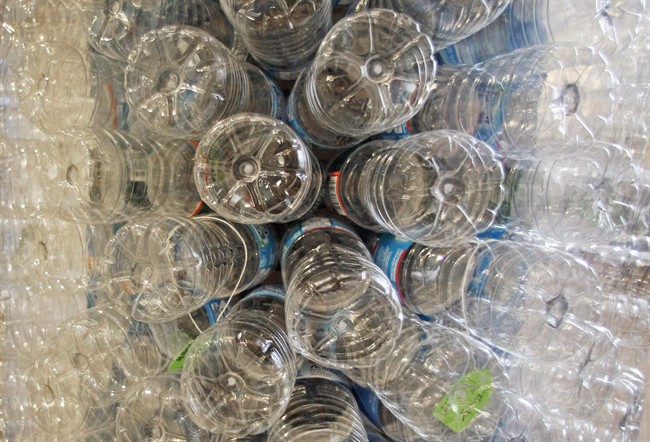TORONTO – Waste management and the behaviour of everyday citizens need to change to keep harmful plastics out of Canada’s waterways, a researcher who recently examined hundreds of pieces of litter in one of Lake Ontario’s tributary rivers says.

A team led by Chelsea Rochman, associate professor of ecology and evolutionary biology at the University of Toronto, found that about 31 kilograms worth of plastic bottles, food wrappers, toys, straws and cigarette butts had amassed at the mouth of the Don River in the city’s east end over just a two-week period in July.
Identifying and understanding what types of trash end up in the Don can help give officials the information they need to stem the flow of plastics into the Great Lakes, Rochman said.
“When it comes to plastic pollution (in lakes and oceans) we know the majority of it, about 80 per cent, comes from land, with rivers being a major conduit,” Rochman said.
“Plastic production is increasing, and waste management at the moment is staying the same so we have every reason to believe that (plastic pollution) is only increasing over time.”
The City of Toronto is already taking steps to help keep plastics out of the lake, Mayor John Tory said this week, adding that it’s “extremely important” to protect waterways from harmful substances.
“At the last city council meeting, we asked city staff to develop a strategy to eliminate the use of single use plastics, identified as an issue in (Rochman’s) study,” Tory said in a statement.

Get weekly health news
Toronto is also working to improve the water quality in the Lower Don River and Toronto’s inner harbour by eliminating sewer overflow, which often carries plastics, the mayor said.
“This will benefit our goal of controlling plastics in our water,” he said. “Everyone plays a role in protecting our water resources and we explore every avenue to achieve that goal.”
Long-term data on the presence of plastics in fresh water is sparse, but researchers at the Rochester Institute of Technology in New York State have estimated that nearly 10,000 metric tons of plastic waste ends up in the Great Lakes each year.
Water samples taken in Lake Ontario and Lake Erie by the Ministry of the Environment in 2014 found that the number of microplastic particles in the water has grown over the past several decades. Up to 6.7 million particles of plastic were present per square kilometre of lakewater, with Humber Bay in west Toronto having the highest concentration, the provincial government found.
The Canadian government enacted a ban this year on the manufacture and sale of most products containing plastic microbeads – tiny particles often included in toothpaste, skin cleansers and other toiletries. But the small bits of plastic that can end up being ingested by wildlife often originate from bigger pieces of everyday litter, Rochman said.
“Most microplastics are these big bits that are broken down by sunlight into smaller bits, so by stopping these big things you are stopping microplastics from also being in the lake and getting in the food web,” she said.
“In my lab we research plastic pollution in Lake Ontario and we find sometimes 100 pieces of plastic in the gut of one fish.”
Ports Toronto, the agency that manages the city’s harbour and Billy Bishop Airport, operates booms in the Don’s Keating Channel, just upstream from where the river spills into Lake Ontario, to trap fallen branches, and garbage and other debris.
Last month Rochman asked Ports Toronto to allow her team to take a look at the junk collected over a two week period.
The team found that most of the garbage trapped in the booms was just ordinary litter from people using the extensive Don Valley system of parks and trails, or from neighbourhoods further afield, Rochman said.
“The Don River watershed is one of our biggest watersheds in the GTA (Greater Toronto Area) and one of the biggest in Canada, and if someone in the watershed litters on their street and it goes down a storm drain it goes to the Don,” she said.
Information about the types of pollution in Toronto’s waterways can be used to inform government policy or to influence better public behaviours, Rochman said.
For instance, the discovery of over 40 plastic drinking straws caught in the boom could be relevant to the ongoing debate around banning them, she said.
“We know that there are micro-plastics in the lake, and plastics big and small,” she said.
“If we understand what’s coming from our city, we can think of ways to stop it.”







Comments